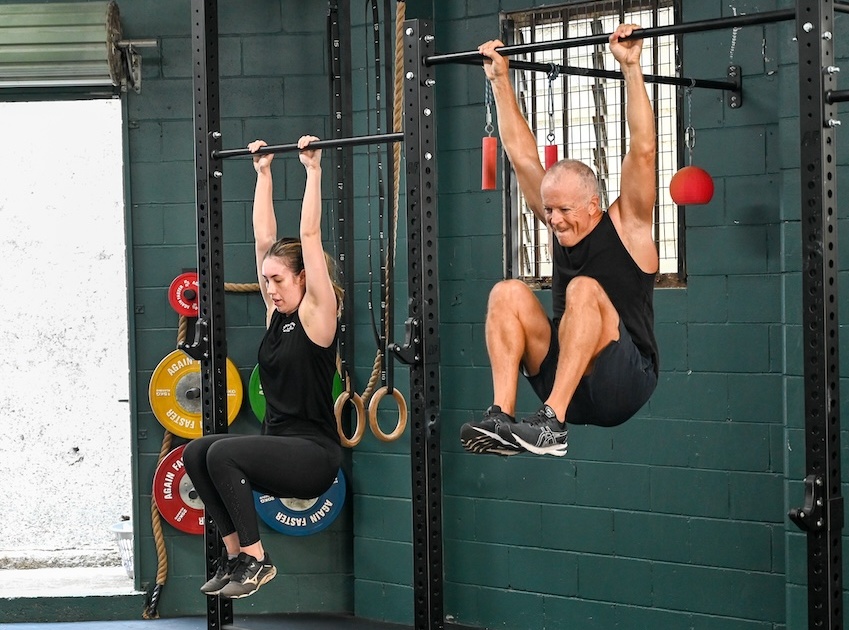
Saunas have become increasingly popular as a means of relaxation and improving overall well-being. You may have wondered… how long can you actually stay in a sauna? What is the best amount of time to achieve the most health benefits? What are the risks? Let’s explore!
Understanding Sauna Sessions
Saunas have been used for centuries in various cultures as a way to promote relaxation and cleanse the body.
They typically consist of a small, enclosed room with high temperatures, often heated by wood-burning stoves or electric heaters.
The heat in a sauna causes the body to sweat, which can have numerous positive effects on your health.
How Long Should You Stay in a Sauna?
The duration of your sauna session depends on several factors, including your health, hydration level, and experience with saunas.
For beginners, it is recommended to start with shorter sessions of 5 to 10 minutes. This allows your body to acclimate to the heat and helps prevent dehydration.
If you have been using saunas for a while and are in good health, you can gradually increase the duration of your sessions to 15 to 20 minutes.
However, it’s essential to listen to your body and not exceed your comfort level.
Remember, the goal is to relax and enjoy the experience without putting unnecessary stress on your body.
Benefits of Sauna Sessions
Saunas offer a range of benefits for both your physical and mental well-being. Here are some key advantages of spending time in a sauna:
Improved Cardiovascular Function
Regular sauna use has been linked to improved heart function, particularly in individuals with heart failure. The heat and steam in a sauna cause blood vessels to dilate, promoting better circulation and reducing the workload on the heart.
Reduced Risk of Stroke
Studies have shown that frequent sauna bathing, typically four to seven times per week, can lower the risk of stroke. The heat and humidity in a sauna have a positive impact on blood pressure, which is a significant risk factor for stroke.
Enhanced Cognitive Function
Sauna sessions have been associated with a reduced risk of dementia and Alzheimer’s disease. Regular use of saunas can help improve cognitive function and protect against age-related cognitive decline.
Muscle Recovery and Reduced Inflammation
The heat from a sauna can help soothe sore muscles and reduce inflammation. Some studies have found that infrared saunas, which use radiant heat, are particularly effective in promoting muscle recovery after intense exercise.
Detoxification and Skin Health
Saunas induce sweating, which helps eliminate toxins from the body. Sweating also opens up the pores and promotes healthier-looking skin by removing dead skin cells and promoting circulation.
Saunas vs. Steam Rooms
While saunas and steam rooms are often used interchangeably, they have some key differences.
Saunas use dry heat, typically generated by a stove or electric heater, while steam rooms produce moist heat using steam generators.
Both have their unique benefits, and choosing between them is a matter of personal preference.
Saunas
Saunas are known for their dry heat, which creates a relaxing and rejuvenating environment.
The high temperatures in saunas can help improve cardiovascular function, promote detoxification, and provide mental relaxation.
Saunas are often heated between 66 to 91°C and sessions typically last between 15 to 20 minutes.
Steam Rooms
Steam rooms, on the other hand, use moist heat generated by steam generators. The humidity in steam rooms can help open up the airways, soothe respiratory conditions, and promote relaxation.
Steam rooms are usually maintained at temperatures around 38 to 43°C, and sessions can vary depending on individual preference, typically lasting less than 15 minutes.

Tips for Sauna Sessions
To make the most of your sauna experience and ensure your safety, follow these tips:
Hydrate before and after: Drink plenty of water before entering the sauna to stay hydrated. After your session, replenish fluids by drinking more water.
Shower before entering: Take a quick shower before entering the sauna to remove any lotions or oils from your skin. This helps prevent clogged pores and enhances the detoxification process.
Use a towel or sit on a towel: Sitting on a towel inside the sauna is a common courtesy to maintain cleanliness and hygiene. It also helps absorb sweat and prevents slipping.
Listen to your body: Pay attention to how your body feels during the sauna session. If you start feeling lightheaded, dizzy, or uncomfortable, exit the sauna and cool down.
Take breaks: If needed, step out of the sauna for a few minutes to cool down and hydrate. This can help prevent overheating and ensure a more comfortable experience.
Don’t overdo it: While saunas offer various benefits, it’s important not to overstay your welcome. Stick to the recommended duration and avoid prolonged exposure to high temperatures.
Remember, if you have any underlying health conditions or concerns, it’s always best to consult with your healthcare provider before starting a sauna routine.
Begin Your Sauna Journey at Vikasati
Interested in unwinding and rejuvenating? At Vikasati, we’re here to introduce you to the comforting embrace of our sauna. It’s a perfect place to ease your muscles, clear your mind, and give your body the care it deserves.
Our sauna is more than just warmth; it’s a step towards better health and relaxation. Book your sessions today!
Ice baths, also known as cold water immersion, have long been used by athletes as a post-workout recovery method.
The concept of immersing the body in icy water for a few minutes may seem daunting, but the benefits it offers in terms of muscle recovery and performance enhancement make it a popular practice among athletes in various sports disciplines.
In this article, we will explore the science behind ice baths and their impact on muscle recovery.
Understanding the Effects of Cold on Muscles
To comprehend how ice baths contribute to muscle recovery, it’s essential to understand the effects of cold on muscles. When muscles are exposed to cold temperatures, several physiological responses occur:
Reduction in Pain Perception: Cooling the muscles reduces nerve impulse transmission, leading to a decreased level of pain perception. This is why many people use ice packs or cold compresses to alleviate pain and swelling after an injury.
Constriction of Blood Vessels: Cold water immersion induces constriction of blood vessels in peripheral tissues, including muscles. This constriction reduces fluid diffusion, which can help reduce exercise-induced acute inflammation.
Restoration of Heart Rate Variability: Cold water immersion has been shown to help restore heart rate variability, which refers to the variation in the millisecond time periods between successive heartbeats. This restoration is beneficial for athletes as it indicates improved cardiovascular recovery.
The Impact of Ice Baths on Muscle Recovery
Ice baths play a significant role in muscle recovery after intense exercise. The following benefits have been observed:
Reduced Delayed Onset Muscle Soreness (DOMS): Ice baths are effective in reducing the symptoms of exercise-induced delayed onset muscle soreness. DOMS refers to the pain and stiffness experienced in muscles several hours to days after strenuous exercise. By alleviating DOMS, ice baths can facilitate faster recovery and enable athletes to resume training sooner.
Faster Inflammation Reduction: Cold water immersion helps reduce inflammation by constricting blood vessels and limiting the spread of inflammatory mediators. This reduction in inflammation accelerates the healing process and minimises discomfort associated with muscle damage.
Improved Circulation and Waste Removal: Immersion in cold water promotes increased blood flow to the muscles. This enhanced circulation aids in the delivery of oxygen and nutrients to the muscles, facilitating the repair process. Additionally, the increased blood flow helps remove metabolic waste products, such as lactic acid, which can contribute to muscle soreness and stiffness.

The Link Between Ice Baths and Exercise Performance
While ice baths are primarily known for their role in muscle recovery, their impact on exercise performance is a topic of interest among researchers. The effects of ice baths on exercise performance can vary depending on the type of exercise involved:
Strength Exercise: When it comes to strength training, the benefits of ice baths are less pronounced. In fact, cold water immersion after strength exercise may hinder the desired outcomes, such as increasing strength and muscle mass. Cold water immersion can interfere with the natural protein and cellular responses that occur in the muscles after each strength session.
Endurance Training: In contrast, ice baths may have a positive impact on endurance exercise performance. Cooling the exercised muscles through cold water immersion can increase the cellular signal responsible for mitochondrial biogenesis. Mitochondria are structures within cells that release energy, and their increased numbers enhance endurance capacity. Therefore, ice baths may amplify the benefits of endurance training.
Incorporating Ice Baths into Your Recovery Routine
If you’re considering incorporating ice baths into your recovery routine, there are a few key considerations to keep in mind:
Duration and Temperature: Ice baths typically involve immersing the body in water around 10°C for 5 to 10 minutes. However, it’s crucial to consult with a healthcare professional or sports therapist to determine the ideal duration and temperature for your specific needs.
Timing: Ice baths are most effective when performed immediately after intense exercise. This timing allows for optimal muscle recovery and reduces the risk of delayed onset muscle soreness.
Alternatives to Ice Baths: If obtaining ice or access to cold water is challenging, other methods such as cold packs or cold showers can provide similar benefits. These alternatives may be more convenient for individuals who do not have access to ice baths.
Additional Considerations: Contrast Therapy and Saunas
In addition to ice baths, contrast therapy and saunas are other popular methods used for muscle recovery and performance enhancement.
Contrast therapy involves alternating between cold and hot treatments, such as switching between ice baths and hot showers or saunas. This contrast in temperature can further stimulate blood circulation and aid in the recovery process.
Saunas, on the other hand, provide dry heat rather than cold immersion. Sauna sessions can promote relaxation, improve blood circulation, and potentially enhance muscle recovery.
Combining ice baths, contrast therapy, and saunas in your recovery routine can provide a comprehensive approach to muscle recovery and overall well-being.
Discover the Power of Vikasati for Muscle Recovery
Interested in elevating your muscle recovery experience? Explore the unique benefits that Vikasati brings to your post-workout routine.
At Vikasati, we understand the importance of effective recovery, whether you’re aiming to boost athletic performance or seeking solutions for muscle rejuvenation. Our sanctuary is designed to meet your needs, offering a range of services tailored to enhance your recovery process.






